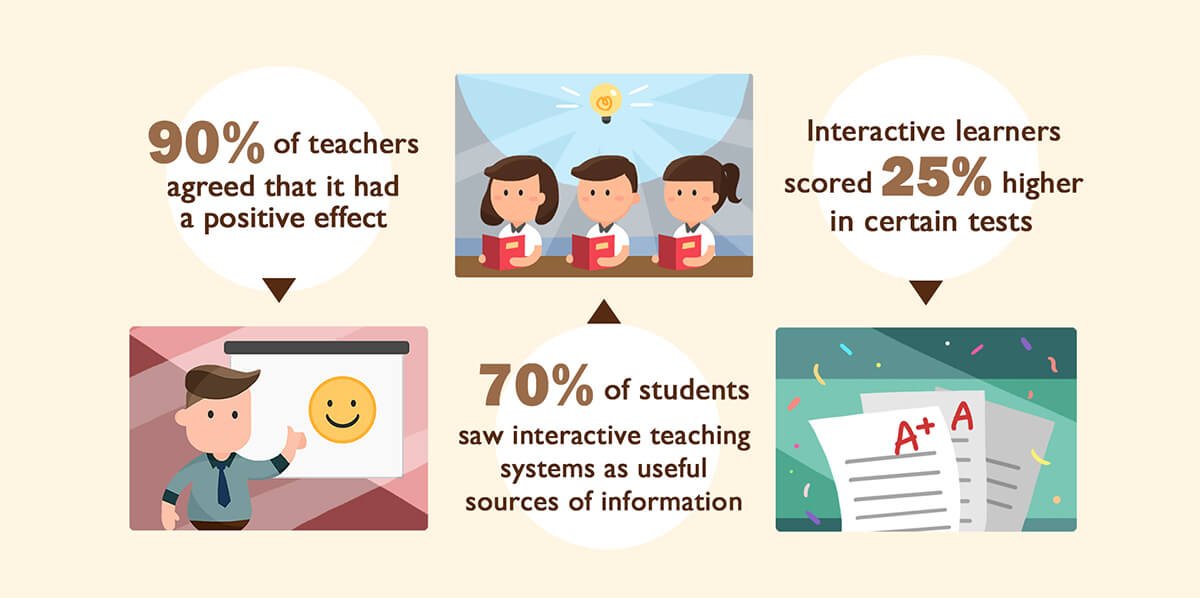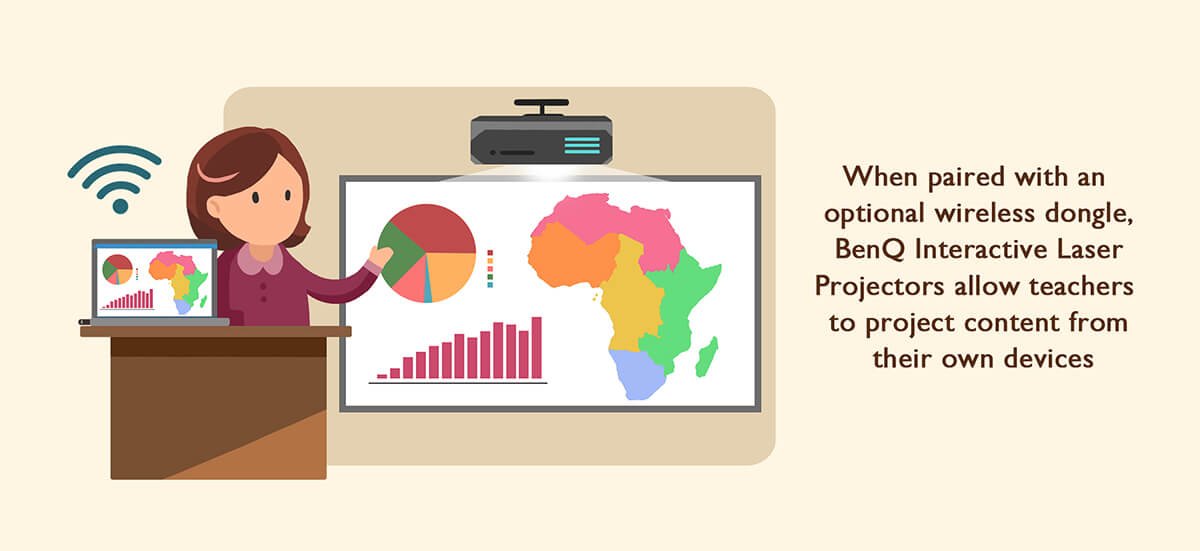Interactive Projection Improves Learning Outcomes
- BenQ
- 2019-01-31

Over the last few years, teaching has been evolving faster than ever before. Instead of relying on the traditional one-way, top-down method of teaching, new models require curriculums to attract students’ attention and promote interaction. One study showed that more than 90% of teachers who used interactive technology in the classroom agreed that it had a positive effect, successfully capturing students’ attention and making learning more active. Meanwhile, more than 70% of students saw interactive teaching systems as instructive devices and useful sources of information. Students that learned with interactive teaching systems scored 25% higher in certain tests than those who didn’t, and many of them had much greater satisfaction with class. Given these undeniable benefits, educators now recognize that interactive learning is the future of education.
As teaching models evolve, schools often find they need to update their equipment to provide teachers and students with the ideal educational environment. However, a cursory look into interactive teaching equipment will uncover a wide variety of devices, including interactive whiteboards (IWB), interactive flat panels (IFP), and interactive projectors, each of which has a different purpose, design, and price. How can schools navigate this vast market and find the devices that best suit their needs?
The size of a display can affect how well students receive information in class. Research shows that 58% of students can’t see content on a 70” flat panel clearly. Generally speaking, a 70 inch or smaller display is fit for a class with 15 or fewer students. For larger classes, laser projectors are often a better choice. Take the BenQ Interactive Laser Projector, for example. It can project images up of up to 100 inches and can flexibly fit in classrooms of any size without compromising image quality, while also offering greater brilliancy and color saturation than lamp-based projectors with comparable lumen output. These features ensure the BenQ Interactive Laser Projector delivers a learner-friendly viewing experience in both intimate classrooms and classes with up to 35 students.
Smartphones, tablets, and laptops are the tools we use to receive and share information. Most modern students, and even some teachers, are digital natives who use these devices every day. Studies shows that receiving information through familiar devices can improve learning achievement. BenQ Interactive Laser Projectors are compatible with optional wireless dongles, such as QCast Mirror, which allow teachers to project wirelessly from their own devices. Best of all, this technology requires no adaptors, apps, or drivers, which means no time will be wasted in the class.
BenQ’s Education Laser Projectors come with optional interactive modules for users who would like to expand their teaching toolbox. The projectors also support writing and drawing across two side-by-side projected images, giving teachers more space for making notes and sharing information. Meanwhile, with a multi-touch feature that allows up to 10 touch points, the projectors can serve as an instant interactive interface allowing teachers and groups of students to work as teams.
For schools that want to introduce new technology without having to undertake any major overhauls or renovations, BenQ Education Laser Projectors are the ideal choice. BenQ Interactive Laser Projectors are compatible with optional modules that can flexibly expand the scale of interactive teaching, all without requiring additional projection screens or unsightly cables and wires. Furthermore, the short projection distance lets teachers avoid direct light from panels or projectors that could hurt their eyes. From offering painless upgrades to promoting teacher and student health, BenQ Interactive Laser Projectors offer an unmatched variety of benefits.
- Why BenQ Interactive Laser Projectors are the best display solution for schools
- The optical engines in BenQ Interactive Laser Projectors can perform for up to 20,000 hours without losing color accuracy.
- BenQ Interactive Laser Projectors are sealed with state-of-the-art technology that blocks up to 99% of dust and other fine particles, ensuring consistent, enduring image quality.
- BenQ Interactive Laser Projectors never need replacement bulbs and require little maintenance, delivering a lower total cost of ownership than options that rely on older technology.




